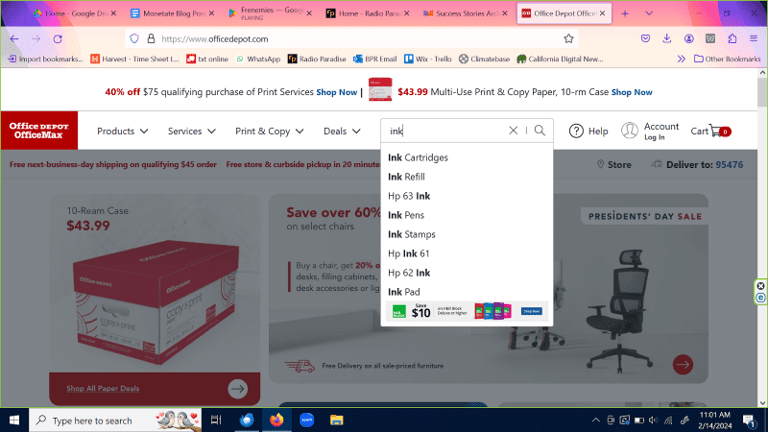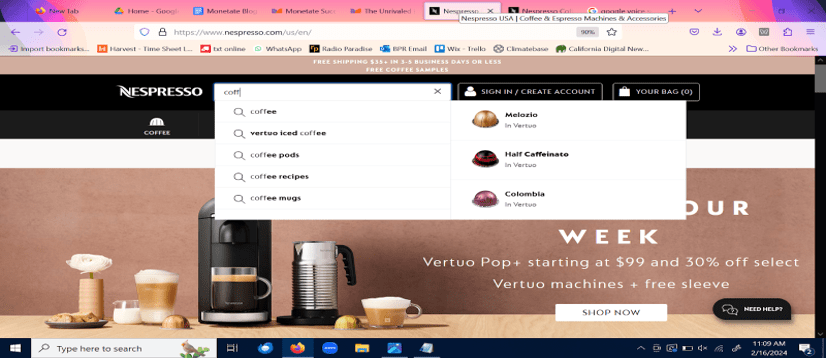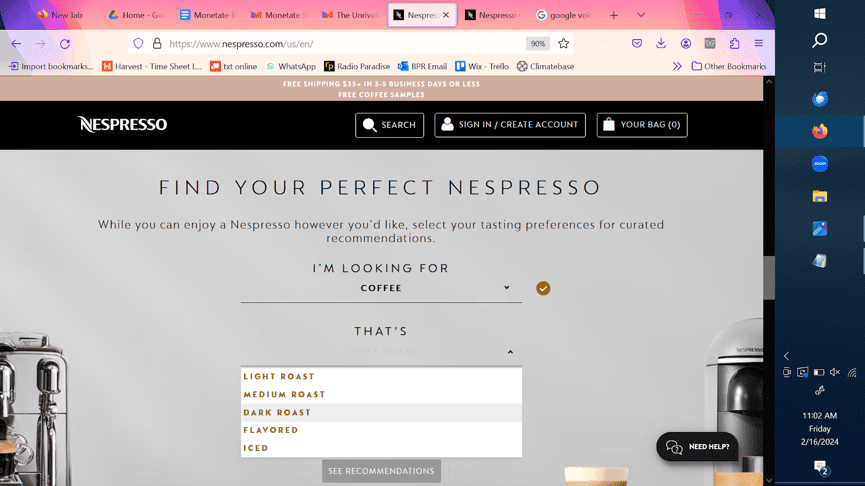
Autocomplete vs Predictive Search: What’s the Difference?
When you begin a search and instantly see a drop-down box displaying words and pictures that match your thoughts perfectly, it feels like magic. But there’s nothing supernatural about it. Autocomplete and predictive search tools are powerful technologies that supercharge eCommerce search so shoppers find what they’re looking for faster – which can translate into increased sales and loyalty for your brand.
What is Autocomplete?
Autocomplete is a feature of online search that suggests possible keywords based on what you’ve typed so far. As you enter words, potential matching terms and alternate keywords appear in a drop-down list or in lighter text in the search box. If you spot an autocomplete term that matches your intent, you can accept the suggestion by clicking or tapping it, or hitting the “return” key or button. Also called type-ahead or word completion, autocomplete speeds the search process.
What is an Autocomplete Example?
No autocomplete definition would be, well, complete without mentioning Google – the most widely-known search tool of all. As you begin entering a search term, Google Autocomplete presents a targeted list of suggested keywords based on your input. The list updates constantly as Google’s algorithm processes every keystroke and prioritizes possible queries on the fly.
The efficiency and accuracy of Google Autocomplete has inspired retailers to adopt the technology in an attempt to connect shoppers with relevant products faster. Four out of five retail websites offer auto-complete, according to the Baymard Institute.
For example, shoppers on Office Depot’s website entering “ink” in the search box may need help honing in on which of the brand’s more than 8,000 SKUs are a match for their needs. Auto-complete provides shortcuts to popular products and categories to help searchers connect fast with the items they need. To help focus attention on the drop-down options, Office Depot darkens the background window.
What are the Benefits of Autocomplete?
Overall, autocomplete reduces typing by as much as 25%, according to Google. Not only do users save keystrokes, but they find what they’re looking for more quickly, because the type-ahead suggestions are precise and relevant.
In the realm of ecommerce, that efficiency can have a significant impact on the bottom line. A Spyfu comparison of sites with and without autocomplete suggests that autocomplete can improve search conversion by up to 24%.
Autocomplete is beneficial in multiple shopping scenarios:
- On mobile devices, tiny keyboards can produce typos when entering search terms. Autocomplete saves shoppers the hassle of trying to peck out whole words by suggesting matches as they go.
- Autocomplete is helpful for shoppers who use talk-to-text functions on mobile devices. By providing complete phrases and long-tail suggestions, autocomplete translates ad-libbed verbiage into specific terms.
- Autocomplete can also help shoppers navigate merchandise lingo by translating their words into matches for product names. Users can skip spelling offbeat brand names or spelling long descriptors, using autocomplete instead to provide the right keywords to surface the right products.
What is Predictive Search?
While autocomplete is popular, it’s far from the only option to super-charge search. An array of AI-powered technologies are now available which are collectively known as predictive search. In addition to text input from the on-site search box, predictive search tools analyze context cues and behavioral data to forecast what the user is looking for.
Predictive search goes beyond suggesting keywords to include direct links to products in the drop-down list of options beneath the search box. If the predictions are on point, shoppers can skip visiting the search results page altogether and proceed directly to evaluating individual items.
Promotions and content potentially relevant to shoppers’ interest can also be listed, providing further shortcuts. Predictive visual search can even display images that match the words shoppers are typing, giving shoppers a detailed picture – literally – of what they seek.
Predictive search tools adapt as users interact with digital experiences. Live chat tools that help source the right products draw on predictive search technology, as do profile builders and product finders that ask for shoppers’ input and show results on the fly. The instant suggestions help shoppers hone their responses to reflect their preferences.
What is a Predictive Search Example?
Google is the dominant innovator in the field of search, and Google predictive search has now been incorporated across multiple touchpoints and device types. In addition to autocomplete suggestions on desktop and mobile browsers and apps, Google’s predictive search also powers ultra-relevant results within tools like Maps.
Retailers are increasingly following suit to incorporate predictive search into multiple product discovery pathways. For example, coffee seller and equipment maker Nespresso not only offers autocomplete for text keyword hints, but also incorporates product links and images directly into the drop-down suggestions. The home page features a three-question coffee finder that returns ultra-relevant results based on shoppers’ preferences to match them with the perfect brew. Predictive search helped Nespresso achieve an 18% conversion improvement on recommended coffees.
What are the Benefits of Predictive Search?
The rich contextual experience that is predictive search has multiple business benefits. More than half of businesses realize revenue benefits from AI-powered suggestions and tools that search the entire breadth of site offerings, such as content and store information, according to a study from Coleman Parks and Alogolia. In addition, by folding in past purchases, behavior, and preferences, predictive search helps build brand loyalty, too. More than half of businesses in the Coleman Parks study say personalized search and results tailored to complement past purchases help encourage repeat purchases.
Specifically, predictive search improves shopping experiences by:
- Helping shoppers picture what they’re looking for. By displaying product images and rich content snippets, predictive search provides feedback about how the site is interpreting their queries. They can refine their input or scan suggested search terms and links for further ideas.
- Adapting to new formats and interaction modes. Cutting-edge predictive search implementations eliminate the keyboard altogether, such as in voice search results that interpret spoken language and visual search tools that parse photo input from cell phone cameras to return relevant product links and images. Interactive formats include chat bots that provide product suggestions.
What is the Difference Between AutoComplete and Predictive Search?
When it comes to autocomplete vs predictive search, the difference is a matter of scale and scope. As the examples above demonstrate, autocomplete is a subset of predictive search functionality.
While autocomplete furnishes suggested text in response to what users have typed so far, predictive search is broader, both in terms of the input it processes and the output it generates. Predictive search synthesizes multiple signals from users to guess at their intent, and can provide an array of content in an attempt to serve the most relevant solution.
How Does AutoComplete Work? How About Predictive Search?
Google once created an April Fool’s Day video featuring humans “who can type really fast. And who are also psychic” to provide suggestions for Google Autocomplete. Of course, the truth is more sophisticated than that.
While traditional search tools could be manually programmed to incorporate business rules and keyboard shortcuts, now artificial intelligence (AI) parses a wealth of data using natural language processing to interpret text input and machine learning to inform algorithms that select and present potential matches in real time. Over time, these search tools optimize their performance, adjusting search suggestions by analyzing shoppers’ queries, click-throughs, and eventual purchases.
While algorithms vary, the factors autocomplete tools take into account can include:
- Product names and other terms you provide – most search tools still enable merchants to set business rules, manually adjust weighting factors in the algorithm, and load discounts and promotions for presentation in search results.
- Popularity – frequently-used keywords can be suggested to other shoppers, and best-selling products and popular categories can be prioritized in suggested search listings.
- Inventory data – quantities of items available and quantities of products within categories can be displayed alongside suggested search terms to indicate at a glance how many potential matches shoppers can access.
Predictive search features beyond autocomplete leverage this data and more. Additional inputs include:
- Geolocation data – search suggestions can reflect whether shoppers are looking for ideas in a store or at home, or according to region.
- Individual purchase history – by factoring in which products shoppers have bought previously and at what price points, search suggestions can prioritize the most relevant terms.
- Interactive input – live chat dialogue, product finder selections and even filters applied to previous searches within the session can be added to the mix of predictive search inputs to inform suggested matches.

How Has Predictive Search and Autocomplete Altered the Approach to Ecommerce Marketing?
With site search, shoppers are in the driver’s seat; they can skip clicking through hierarchies of site categories and jump right to what they want. Autocomplete and predictive search supercharge this sense of control – and they also pose a challenge and opportunity for marketers.
The challenge is that ultra-accurate recommendations that deliver exactly the products shoppers want leave little room for serendipitous finds and promotional offers. The opportunity lies in how marketers fine-tune suggested search terms and results to reflect business priorities as well as shoppers’ intent. As you contemplate how to use autocomplete and predictive search, consider these tips:
Prioritize the User
- Shoppers prize the efficiency of locating products by keyword; fully 43% head straight to on-site search when they visit retailer websites, according to Forrester. Interfering with this core functionality too much risks frustrating shoppers and potentially losing the sale. Three out of four shoppers say they’ve abandoned sites after an unsuccessful search, Google found. So tread lightly when it comes to injecting business logic and promotional suggestions into the experience .
Design Matters
- It’s possible to include promotional snippets within the autocomplete experience, but careful design and execution is a must. Use A/B testing to determine the right placement and context for such promotions.
Make it Mobile-friendly
- More than half of consumers primarily conduct searches on their phones, according to HubSpot. Don’t offer a miles-long list of autocomplete suggestions, or incorporate photos so large that they overtake the entire smartphone screen. Instead, leverage the power of predictive search to deliver a curated set of suggestions and test your implementation to ensure it’s sized for small screens.
Make it Conversational
- Think beyond the search box when it comes to implementing predictive search. Interactive features like chatbots and profile builders can be an effective way to hone suggestions, boost engagement, and glean data about shoppers’ preferences.
The Monetate Personalized Search toolset offers the power of predictive suggestions alongside robust testing and optimization capabilities, so that you can continually improve the efficiency and effectiveness of your on-site search offerings. By offering engaging and accurate suggestions via search, your brand can earn trust and loyalty from customers, leading to long-term growth.


